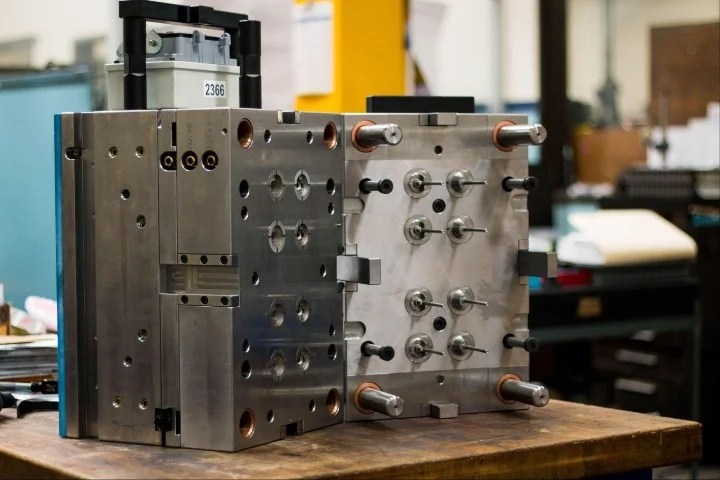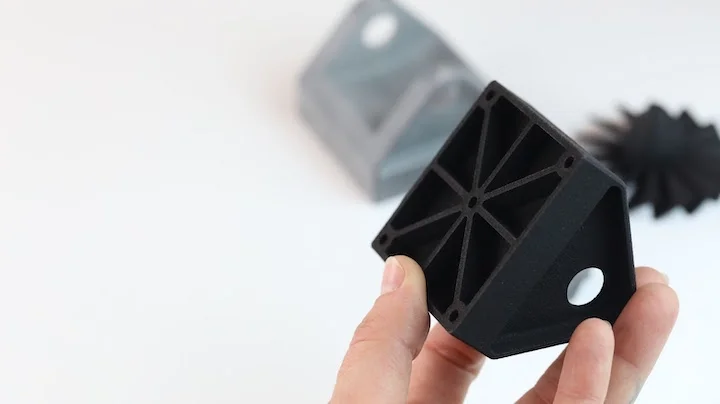Time to read: 3 min
Additive manufacturing has revolutionized the way we prototype products—new ideas can take shape in a matter of hours. While large-scale 3D printing is becomingly increasingly possible, the technology is still most commonly used to develop consumer products on a smaller scale. However, this shouldn’t stop you from thinking big when it comes to using additive manufacturing techniques for prototyping larger products.
In this article, we’ll look at ways to use 3D printing to prototype furniture, covering three of the crucial aspects of furniture design: aesthetic form, ergonomic function, and structural soundness.
With the use of 3D printing technology, furniture product designers can more easily and accurately evaluate each of these features before building production parts and in the end save time and money.
3D Printing for Component Design
Many modern functional furniture products, including office chairs, adjustable standing desks, and desktop lighting, are comprised of several smaller components that are assembled to produce the final product.
Each of these components—seat-adjusters, armrests, or lamp bases, for example—will have basic functional requirements. However, the distinguishing features for any particular furniture product will comprise the structural performance, ergonomic design, and aesthetic form. This is where the value of 3D printing comes into play for these design features.
Initial parts can be modeled, printed, and immediately tested for ergonomic fit and function. One of the key strengths of 3D printing is the ability to cost-effectively produce multiple iterations of an idea in a short period of time. Having actual components on-hand quickly allows the designer to evaluate key aspects of ergonomic design, like the particular grip feel or viewing angles and then make rapid design optimizations.
This ability to interact with physical hardware early in the design process, rather than exclusively rely on models and drawings, empowers designers to make more confident decisions.
Nylon and ABS materials should be considered when needing to create highly dimensionally accurate components with excellent surface finish and mechanical properties. For even higher quality prototypes or low-volume production runs, 3D models can be used to produce low-volume RTV molds.
Keep in mind the anisotropic nature of 3D printed components when evaluating their structural rigidity. The strength of a printed component will be greatest along the axis of the printed material.
Joining Furniture Panels
A novel way that additive manufacturing has become a valuable tool for creating original furniture products is in the idea of 3D-printed panel joints that may be used to join flat plywood or flexible panels into creative shelving or work-surface solutions. By creating unique sets of custom joints for a project, furniture designers are able to create contemporary pieces of furniture without any traditional fasteners or adhesives.
The relatively small joints can be designed to position the panels at any required angle, and multiple copies of each component can be used as necessary to build a complete piece. This type of design lends itself to open-source furniture – if joints break or wear out over time, new parts can be printed from any machine, as long as the models are still available.
Designs for these types of plastic joints may be also ultimately produced using injection molding for increased mechanical strength, however 3D-printed parts may suffice as-is for low-volume, lower-load bearing pieces of furniture.
Check out this example from Design Boom for inspiration on how to 3D print furniture joints.
Main Takeaways
The expanding accessibility of additive manufacturing is providing greater numbers of designers with the ability to create new hardware. This continues to broaden the scope of the industries that benefit from the ability to produce rapid prototypes for evaluation.
Many of the same advantages that benefit consumer product hardware design can also benefit furniture design, which can leverage the technology to optimize ergonomic fit and function, aesthetic form, and approximate structural rigidity through rapid, inexpensive design iteration.
Furthermore, 3D printing continues to expand the realm of creative possibility by simply providing new methods for producing furniture.

